Is Trauma Actually Stored in the Body? (No.) 🧠
The Brain Keeps the Score, The Body Is the Scoreboard (7min Read)
TL;DR Summary
Trauma changes how your brain and nervous system function, often leading to real physical symptoms.
But that doesn't mean trauma is literally stored in your body like files in a cabinet.
The body manifests trauma via the nervous system, especially through chronic stress responses.
Emerging theories about fascia and muscle tension offer insight, but the brain remains the central processing hub.
Healing trauma involves both top-down (mind) and bottom-up (body) approaches.
Understanding this nuance can help you choose more effective healing methods—especially if talk therapy hasn’t been enough.
Trauma Is NOT Stored in the Body
As if last week's controversy wasn’t enough, I’ve got another hot take.
Trauma isn’t “stored” in the body.
Yep, I said it.
Trauma isn’t like a tumor; you can’t find it in one single location.
For network neuroscientists and biologists, this shouldn’t come as a surprise.
But this may be a bit shocking to anyone who’s read The Body Keeps the Score.
Today, I’d like to bring a more nuanced perspective into the conversation about where trauma is stored.
The body doesn’t keep the score; the brain does, but the body is the scoreboard.
Let’s find out how!
“Where” Is Trauma, Really?
Let’s start with the question that sparks debates across therapy rooms and social media alike: Is trauma stored in the body?
At face value, it sounds poetic and intuitive—maybe even empowering.
But what does it actually mean?
To answer this, we need to clarify a core distinction:
Just because trauma manifests in the body doesn't mean it is stored in the body as if it were a physical object tucked away in your fascia or muscles.
So, what’s really going on?
Great question; a mixture of neuroscience and psychology is the short answer!
How Trauma Manifests: The Nervous System’s Role
Imagine your nervous system like the electrical wiring in a house.
When trauma happens, it’s like a circuit breaker gets tripped.
Not only does that moment of danger get encoded in your brain, but the entire system—brain, nerves, muscles, hormones—starts to behave as if the threat is still ongoing.
This is not about storage.
It’s about a system-wide shift. Let’s break it down, region by region:
Amygdala: Your fear-processing hub. In trauma survivors, it’s often on high alert, scanning constantly for danger.
Hippocampus: In charge of context and time. Trauma disrupts its function, which is why traumatic memories often feel timeless and fragmented.
Prefrontal Cortex: The part that helps you regulate and reason gets overridden during trauma, and its functioning can stay impaired long after.
Autonomic Nervous System (ANS): Trauma alters the balance between your sympathetic (“fight/flight”) and parasympathetic (“rest/digest”) branches, keeping you stuck in survival mode.
All of these systems work together, and when trauma hits, they reorganize themselves around threat detection and survival—often long after the threat has passed.
This is why trauma shows up as:
Hypervigilance
Chronic muscle tension
Digestive issues
Insomnia
Emotional numbing or dissociation
It’s not about “where” trauma is stored—it's about how the entire system has been reshaped.
So Why Do People Say It’s “Stored” in the Body?
The phrase “trauma is stored in the body” became popularized by clinicians like Bessel van der Kolk and Peter Levine, who noticed that traditional talk therapy often failed to resolve the physical symptoms of trauma.
They noticed that people often felt their trauma as sensations—tight chests, clenched jaws, gut pain, or chronic fatigue—even when they couldn't verbalize what happened.
This led to the idea of somatic memory—that trauma might live on in muscle tone, posture, fascia, or even cellular processes.
And in some ways, that metaphor works.
But as any scientist knows, metaphors are not mechanisms.
What About Trauma Being Stored in Fascia or Muscles?
Here’s where things get complicated—and interesting.
First of all, if you’ve never heard of fascia, it is the connective tissue that wraps around your organs and muscles.
It’s richly innervated with nerve fibers and plays a role in proprioception (body awareness) and pain.
Some theories suggest trauma-induced tension may get “locked” into fascial patterns, contributing to chronic pain or emotional overwhelm.
And emerging research does, in fact, suggest that fascial tension may reflect trauma responses, but it’s unclear whether it stores trauma like a hard drive stores data.
Think of fascia less like a file cabinet and more like a sponge: It absorbs the impact of life experiences but doesn’t “store” a memory with narrative clarity.
Ok, so what about muscles then, Cody? Can they store trauma?
Muscle tension is one of the most common physical signs of unresolved trauma.
I see it all the time in my clients and even myself!
But muscle tissue doesn’t store memories—what it stores are patterns of tone and contraction, set in motion by the brain and nervous system.
So, again, while it’s a great metaphor, and yes, the muscle tension is absolutely happening, that doesn’t equate to the trauma being stored there in the way most people think it does.
So… Is It All Just in the Brain?
Not quite.
While the brain is the epicenter, it operates through a network that includes the body.
Trauma changes the entire network:
Hormone levels (like cortisol and norepinephrine)
Immune function
Mitochondrial health in muscles
Muscle metabolism
The gut-brain axis
Vagal tone and interception
And SO MUCH more
Emerging fields like Psychoneuroimmunoendocrinology (say that 3 times fast) study how trauma affects all of these different networks and systems.
This is actually my exact area of research.
The mind, brain, and body are all involved in trauma when it happens, so it makes sense you need to work with all 3 to truly heal trauma as well.
Neuroscientist Dr. Lisa Feldman Barrett offers a powerful reframe:
“The brain keeps the score, but the body is the scoreboard.”
In other words, your brain tracks, predicts, and responds to threats based on past experience—but it’s your body that displays the consequences.
Muscle tension, chronic pain, gut issues, even fatigue—they’re not where trauma is stored, they’re where it’s expressed.
Your body becomes the readout of your nervous system’s trauma-influenced wiring.
It's not storage—it’s signaling.
What Does This Mean for Healing?
If you’ve tried to “think your way out” of trauma, and it hasn’t worked, this science might validate what you’ve intuitively felt all along.
Trauma lives through the body, even if it's not stored in the body.
Therapies like IFS, Somatic Experiencing, TRE (Tension and Trauma Releasing Exercises), EMDR, and DBR, especially when all paired together, can help shift your nervous system out of survival mode and into a state where healing is possible.
Healing happens not by “finding where” the trauma is but by helping your whole system feel safe again.
I’ve written entire blogs on nearly every single one of these modalities.
If you’d like to learn more about them, I’ll link them below.
The Takeaway
So, what’s the bottom line?
Trauma isn’t an object lodged in your body—it’s a set of patterns encoded across your nervous system.
Some of those patterns are physical. Others are emotional.
Some show up in your thoughts, and others in how you breathe, how you move, or how you feel in your skin.
The real question isn’t “Where is the trauma?”
It’s: What part of me is still organizing itself around a past threat?
And how can I help that part come back into the present?
Healing is possible! You’ve got this.
And as always, until next time… Live Heroically 🧠
Want to Work With Me? Here Are 3 Ways I Can Help You
Join the Balanced Creator Community (free): It’s the only community on earth built to support the mental health & mindset of content creators & entrepreneurs (creatorpreneurs) while growing and monetizing their brand and business.
Become a paid subscriber to the Mind, Brain, Body Lab Digest: You’ll get subscriber-only video posts, email replies, access to my entire blog archive, early access to new products, workshops & tools I create!
Work With Me 1on1 Through the Me 2.0 Program: Work with me 1on1 to heal the unresolved trauma and limiting beliefs that are holding back your health, wealth & relationships. (Extremely Limited Spots; Paid Subscribers Are Prioritized on Waitlist)
Supporting Research
Bremner, J. D. (2006). Traumatic stress: Genetics, brain imaging, and psychophysiology. Psychiatry and Clinical Neurosciences, 60(3), 282-290.
Levine, P. A. (1997). Waking the tiger: Healing trauma. North Atlantic Books.
McEwen, B. S. (2007). Physiology and neurobiology of stress and adaptation: central role of the brain. Physiological Reviews, 87(3), 873–904.
Ogden, P., Minton, K., & Pain, C. (2006). Trauma and the body: A sensorimotor approach to psychotherapy. WW Norton & Company.
Porges, S. W. (2001). The polyvagal theory: Phylogenetic substrates of a social engagement system. Biological Psychology, 62(3), 183–198.
Rothschild, B. (2000). The body remembers: The psychophysiological effects of trauma on body and mind. WW Norton & Company.
van der Kolk, B. A. (2014). The body keeps the score: Brain, mind, and body in the healing of trauma. Viking.
Picard, M., McEwen, B. S., Epel, E. S., & Sandi, C. (2018). The biology of resilience: Insights from the allostatic load framework. Developmental Psychobiology, 60(2), 223–236.
Stecco, C., & Schleip, R. (2016). Fascia and the fascial system from a neurobiological point of view. Journal of Bodywork and Movement Therapies, 20(1), 123–127.
Shields, G. S., Slavich, G. M., & Yonelinas, A. P. (2016). Early life stress is associated with reduced grip strength in adulthood. Psychoneuroendocrinology, 68, 108–116.




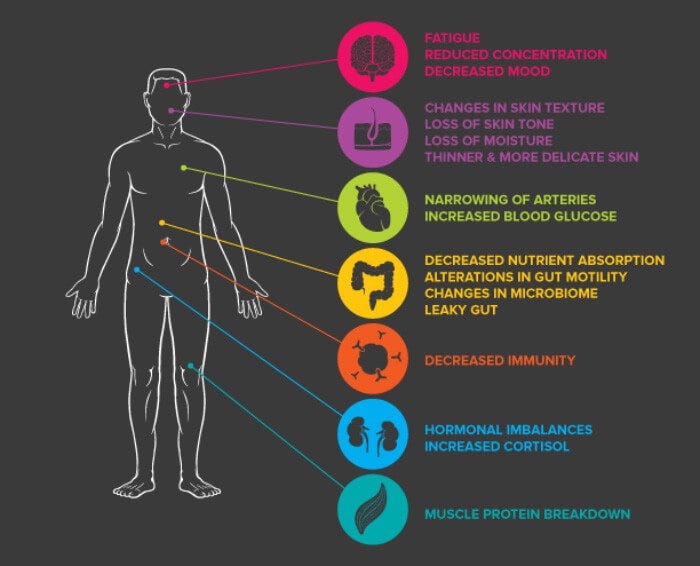

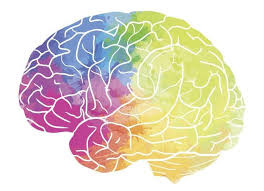
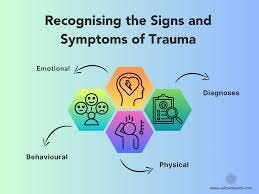
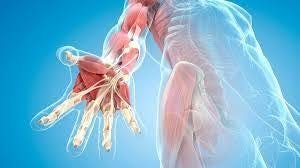
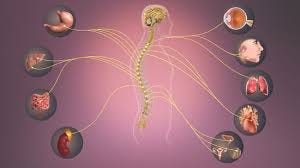



I often think of the nervous system as being musical, and its various shifting states are like harmonics. So when I think of the “score” I actually think of a musical score. The brain is the conductor and the body is the instrument; or entire orchestra.
For me it resonates a lot with some J.Lacan lecture where he said something like this: there is no such thing like repressed emotions, only truth about emotions can be repressed, emotions will always find its way.
So triggered by your article I think.
It means that we are not storing any bad feelings in form of some kind „blocked energy”, but rather emotional responses are established wrongly based on „truth” from the past which is not appropriate in current moment.
And knowing this „truth” about specific emotion can help us recognize this pattern and eventually change it.
Probably it is not clear what I said, but I really needed to articulate this. 🙈